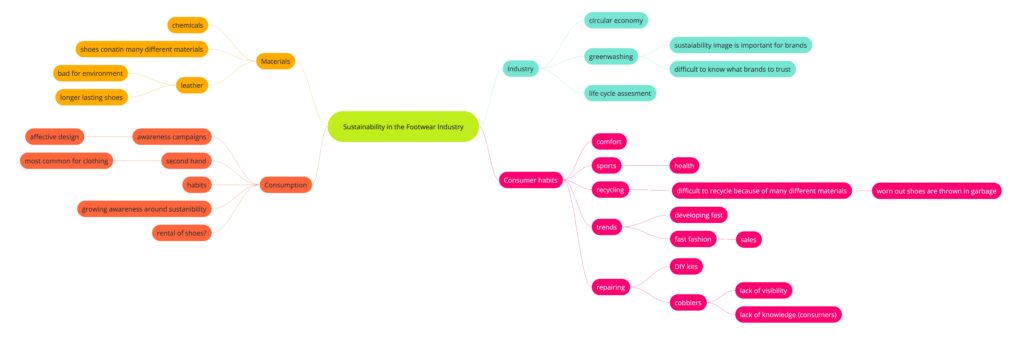In this blogpost I discuss the last two main areas of my mind map and some of the main problems within the areas.

INDUSTRY
One of the main problems when it comes to the industry aspect is greenwashing. With the growing awareness around sustainability in the world it is more important than ever for brands to have a sustainable image, but how genuine they are can vary greatly. Some brands might come off as being environmentally friendly by for example using recycled materials or vegan leather, but then they don’t share the fact that they use a lot of toxic chemicals in the production. Brands choose wisely what information they want to share and only shares what they will benefit from, so there is still a big lack of openness in the industry. It is therefore extremely difficult for consumers to navigate this market, where true intentions vary widely.
Room for improvement: Make it easier for consumers to identify which brands are truly environmentally friendly and not just greenwashing.

CONSUMER HABITS
Consumer habits is a very broad area and is very similar, if not the same as consumption, so those two areas could have been just one. There are many problems regarding consumer habits, and they are tightly connected. One of the biggest problems is overconsumption. 23 billion pairs of shoes are made every year and 22 billion are thrown into landfill (Dennis, 2022). Trends and fast fashion drive us to buy more shoes than we need and we buy new shoes even though we often have shoes that are in perfectly good condition. Another issue might be that many of us don’t know how to properly care for our shoes once they show signs of wear. There is a lack of knowledge when it comes to what parts of a shoe that can be repaired, and that problem might be connected to the fact that cobblers are not visible in todays society. Somehow, cobblers seem to belong in the past. While there are many DIY repair kits available, they are usually limited in what they can fix.
Room for improvement: Make people get a stronger relationship to their shoes so that they care more for them, don’t want to replace them and want to repair them when needed.

🩴 🥿 👠 👡 👢 👞 👟 🥾 🩴 🥿 👠 👡 👢 👞 👟 🥾 🩴 🥿 👠 👡 👢 👞 👟 🥾 🩴 🥿 👠 👡 👢 👞
REFERENCES
- Dennis, P. (2022, December 30). Shoe waste: How consumption became culture. Circular Online. https://www.circularonline.co.uk/features/circular-trainers-how-consumption-became-culture/


